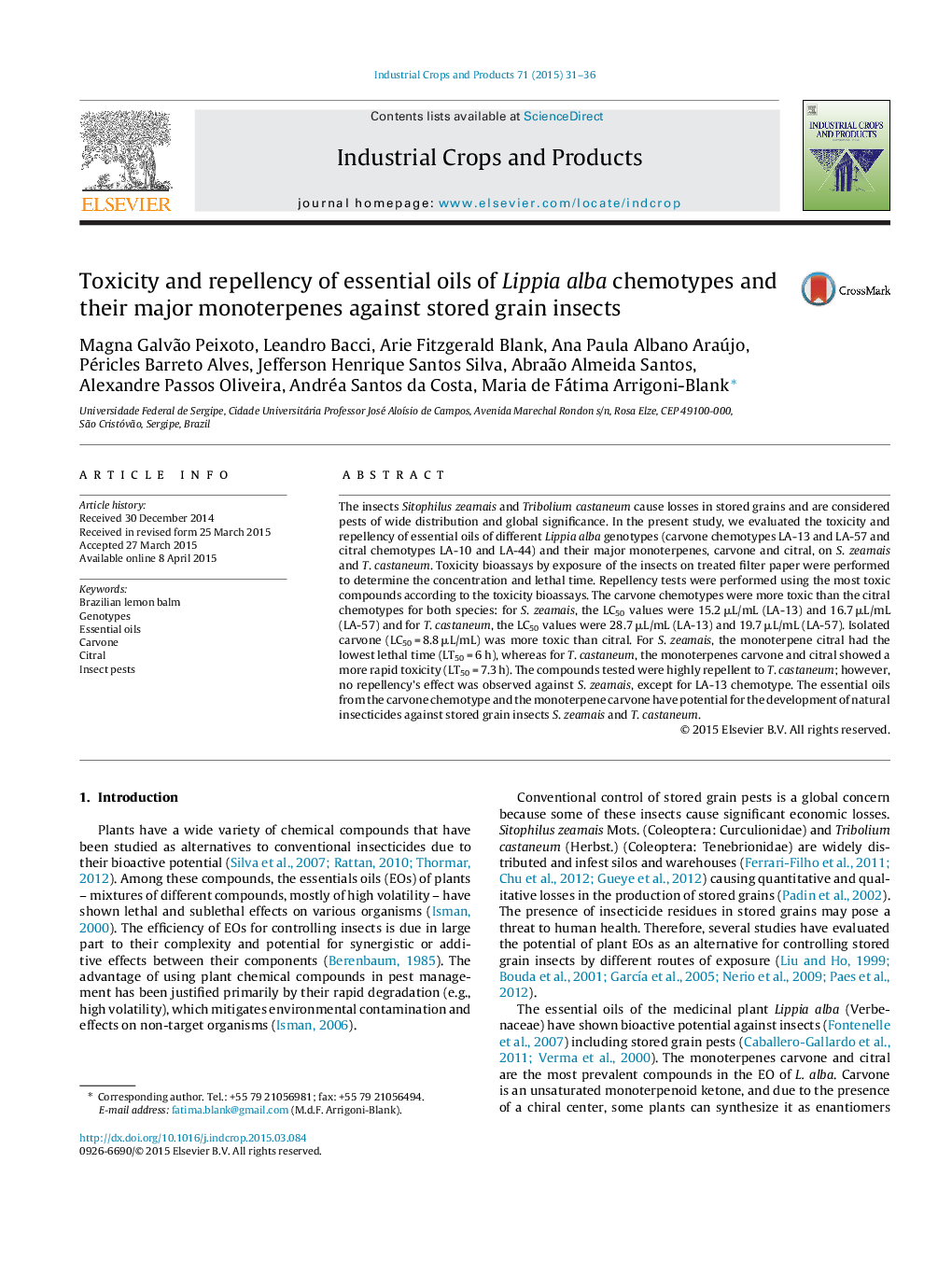| کد مقاله | کد نشریه | سال انتشار | مقاله انگلیسی | نسخه تمام متن |
|---|---|---|---|---|
| 6376051 | 1624838 | 2015 | 6 صفحه PDF | دانلود رایگان |

- Sitophilus zeamais and Tribolium castaneum are important pests of stored grains.
- EOs of Lippia alba chemotypes and their major monoterpenes were tested here.
- Carvone chemotypes were more toxic than citral chemotypes for both species.
- The compounds were highly repellent for T. castaneum.
- Carvone rich EOs and carvone isolated are alternatives to control these insects.
The insects Sitophilus zeamais and Tribolium castaneum cause losses in stored grains and are considered pests of wide distribution and global significance. In the present study, we evaluated the toxicity and repellency of essential oils of different Lippia alba genotypes (carvone chemotypes LA-13 and LA-57 and citral chemotypes LA-10 and LA-44) and their major monoterpenes, carvone and citral, on S. zeamais and T. castaneum. Toxicity bioassays by exposure of the insects on treated filter paper were performed to determine the concentration and lethal time. Repellency tests were performed using the most toxic compounds according to the toxicity bioassays. The carvone chemotypes were more toxic than the citral chemotypes for both species: for S. zeamais, the LC50 values were 15.2 μL/mL (LA-13) and 16.7 μL/mL (LA-57) and for T. castaneum, the LC50 values were 28.7 μL/mL (LA-13) and 19.7 μL/mL (LA-57). Isolated carvone (LC50 = 8.8 μL/mL) was more toxic than citral. For S. zeamais, the monoterpene citral had the lowest lethal time (LT50 = 6 h), whereas for T. castaneum, the monoterpenes carvone and citral showed a more rapid toxicity (LT50 = 7.3 h). The compounds tested were highly repellent to T. castaneum; however, no repellency's effect was observed against S. zeamais, except for LA-13 chemotype. The essential oils from the carvone chemotype and the monoterpene carvone have potential for the development of natural insecticides against stored grain insects S. zeamais and T. castaneum.
Journal: Industrial Crops and Products - Volume 71, September 2015, Pages 31-36